|
The purpose of education is to prepare an individual to reach their highest potential – to flourish. One characteristic of this philosophy is the idea that the student should be capable of independence. Individual autonomy promotes the critical capacity to make good decisions, independent of the beliefs of a group or religion. Home schooling may cover the curriculum of a pragmatist philosophy on education, but does it truly create individual autonomy independent of any religious or social biases?
Children who are educated in the home or in small groups under a religious doctrine (ex. Amish) are at greater risk of misrepresenting their view of autonomy. A student who is home schooled by their parents may receive a high-quality education similar to that set out by the state. However, a large portion of their education in social interaction may go unlearned. This subtle, yet extremely important, piece of the education puzzle could have severe repercussions for a home schooled student later in life. In On Education, Brighouse argues that true autonomy involves the ability to determine one’s own values. In home schooled situations, values may be imposed directly, or indirectly, limiting a child’s ability to decide their own views. For example, an Amish child may grow up to misrepresent modern social values as ‘evil’ or ‘ungodly’ simply because they had Amish values imposed on them from an early age. High attrition rates by young Amish are a great example of what can result when autonomy is not a primary focus of education. As an educator it is important to understand that a single-focused education in any area of schooling can lead to the development of homogeneous beliefs. It isn’t a teacher’s job to expose children to every possible religious or educational view. However, it is necessary to guide students to understand that the concept of choice is essential in the idea of individual autonomy. Teachers must promote critical thinking skills in all aspects of school. It is also essential to promote social interaction among students so that individual views and experiences can be shared. The idea that thinking critically about their own beliefs while taking into account the views of others, is essential in developing autonomy. A home schooled student would not have the luxury of social interaction with various view points and could disagree with or oppress other peoples viewpoints in social interaction. The philosopher Daniel Dennett argues that in the case of religion, children should be taught the history and beliefs of all religions. Then they should be allowed to make decisions without the influence of parents, teachers or religious leaders. In his book, Breaking the Spell, Dennett states that religious indoctrination can poison all of society. Although his thesis is religiously based, it certainly applies to the concept of schooling and autonomy. Children should be allowed to explore many different belief systems, viewpoints and religions and be given the ability to decide a value system for themselves. This is an ideal theory and difficult to represent in the real world because almost certainly everyone will be influenced by someone and in the case of children, they receive the strongest influence from their parents. However, the idea that a teacher can foster children to witness different viewpoints is essential in the development of autonomy. Home schooling is a moral issue that deals with a student’s ability to function as an autonomous member of society. Although publicly schooled and home schooled students may share the same skill set, the home schooled child may lag in social maturity. This social education is a key element to become truly autonomous. Without it, a student my not be able to flourish. @davidgroggins is a master motivator because he offers one simple message: You have to suffer. The difference between someone who is motivated and someone who is driven is suffering. The person who just attended Tony Robbins latest seminar is motivated. They become driven once they put their plan into action. Change is never easy and it often takes a tremendous amount of suffering before things start to turn in your favour.
The difficulty we have as human beings isn't that we can't or won't suffer. It's that we assume that if we do put ourselves into a position of pain we should be rewarded for it. Got up early this morning to go for a jog? Great. That doesn't give you a free pass to gorge on donuts at lunch or put a sweaty selfie on Instagram. Suffering is an individual experience. Sure, you can suffer as a group or have someone feel sympathetic or even empathetic for you. At the end of the day, you're in control of your suffering. This is best demonstrated by Buddhist monks who live in a community, but meditate with their own thoughts. The meditating is done to aid the balance between joy and suffering so they can connect with it, experience it and ultimately be content with it. Suffering is an inevitable part of life. Embracing it, seeking it out and (yes) enjoying it will not take away from your life, only add to it. Get some! For those who are a fan of the classics, you know that education has its foundation in both Plato and Aristotle’s philosophies on well being. Plato's famous cave analogy tells us that real learning occurs when we open our minds and assume that what we see, hear, feel and believe are just shadows. The mind can grow through the investigation of ideas by peeling back the dark vale that covers them. A modern view of this philosophy can be found in Steven Pinker’s book - The Blank Slate. He uses a science-based approach to contend that we’re all born hard-wired with plenty of knowledge. Much of this knowledge comes to the foreground when we mix it with experience. A great example is the acquisition of language. It appears that we’re born with the ability to communicate already mapped on our brains. Once we’re exposed to language, we seem to be able to fill in multiple gaps quickly. Our ability to infer seems to have been pre-installed at birth.
Aristotle believed that we learned best by interacting with knowledge. Our minds are empty vessels that can be filled to the brim with new ideas. Essentially anyone can learn anything as long as their brain is open and ready to save the knowledge. The traditional industrial style classroom leaned more on the Aristotle approach with it’s desks in rows and reinforcement of mathematical facts. Obedience was the key to learning. Follow the instructions and you will acquire the knowledge required to live a well-balanced for fulfilling life. In today’s classroom you’ll find a far more Platonic approach to education. The inquiry method of teaching is nothing more than Plato’s theory put into action. It’s interesting to note that only a brief moment of teacher education is dedicated philosophical education, and in the classroom almost nobody talks about either Plato or Socrates when asked about their teaching pedagogy. Why? Other than the risk of sounding archaic, many educators are likely unaware that they’re facilitating in this ancient theory of teaching. Instead they can confidently articulate their educational approach by reciting important terms such as ‘personalization, flipped-classroom, deep learning, wellness’ and many others. It is possible for a teacher to speak a sentence with so much educational jargon, even a Rhodes scholar might be confused. “By flipping my classroom, I’ve been able to take a personalized approach to teaching thus enabling my students to engage in deep learning with a growth mindset.” While this certainly sounds impressive, it’s covering up the core principals that both Plato and Aristotle preached about many years ago. The goal of education at any level should be to improve eudaemonia - the idea of human flourishing. In an educational setting, the tactics of achieving this goal (see the post below) are not as relevant as the strategy of developing competent, capable and critical thinkers. Whether you’re using personalized learning, flipped classrooms or have a focus on wellness, the goal is to either fill the students head with new information or expose her to new ideas that will allow her to learn independently. Ask the average person what they know about World War 2 and they’ll likely tell you about D-Day. Ask them to tell you something about D-Day and they’ll mention Juno or Omaha beach or the massive airborne drop that preceded the beach. Ask them about Juno beach and they’ll explain the difficulties getting off the ships and the fierce fight that took place. Keep it going and you’ll likely get to individual stories about solider’s actions that morning. We can uncover layers of events that took place in WW2 by drilling deeper and deeper.
What’s rarely ever talked about is the development and execution allied grand strategy ultimately ended the 3rd Reich. The entire plan took years to develop and required the strategic thinking that well beyond the immediate landings, but also included the drive towards Germany, the liberation of France and the low countries and the ultimate plan once Hitler had been disposed. Everything that happened from June 6th, 1944 onwards was the result of a massive strategic effort. All the battles, stories and hardships were directly related to the ability of the tactics to match the grand strategy of the war effort. Had the airborne effort on the night of June 5th failed to seize the correct bridges, the landings would have stalled on the beaches. If a fuel line hadn’t been laid under the channel, the tanks would have run out of gas. We can easily get caught up in the power of tactics over strategy in our daily lives. Rushing from to-do list time to to-do list item can make us feel productive. However, if paying your credit card off immediately after shopping at the mall doesn’t match with your grand strategy of saving money, it’s a fail. Same goes with work. If you can knock off every task your manager gives you, but you still feel unfulfilled, it’s a fail. It’s important to spend time mapping out a grand strategy for your life. It doesn’t need to have a time limit (WW2 didn’t), but it should have a clear outcome. Becoming a doctor, independently wealthy, owning a car or a house, getting in better shape and being more active in your community are all noble strategies. Write them down and every time you do something on your to-do list ask yourself if you’re moving towards or away from that goal. The allied Normandy strategy took longer than expected. They did finished it though. “Trust is difficult to gain and very easy to lose.”
- life There’s no better way to build your self-brand than by continuing to show up. Making promises and continuing to keep them will ALWAYS move the needle forward in any relationship. If you raise your hand and say yes to something, be sure to follow through to the bitter end. It is even better to do it without complaining or resentment or virtue signalling. When things get tough, the person who always follows through is most likely going to get the tap on the shoulder to do something about it. As a supplement to a blog post below, I have created slidecast that was given to the senior school . In the talk, you'll learn why fear and failure are keeping you from aiming high and being a better person. Podcast version available here. Enjoy! Daedalus had been imprisoned by King Minos of Crete within the walls of his own invention, the Labyrinth. But the great craftsman's genius would not suffer captivity. He made two pairs of wings by adhering feathers to a wooden frame with wax. Giving one pair to his son, he cautioned him that flying too near the sun would cause the wax to melt. But Icarus became ecstatic with the ability to fly and forgot his father's warning. The feathers came loose and Icarus plunged to his death in the sea. What’s the lesson here? Don’t disobey the leader. Listen to what your parents say. Don’t try to imagine that you’re better than you are. Fall into the box that society puts you in. Don’t dream big. I think that’s dead wrong. It’s interesting to note that in the modern version of the story, the part about flying too low has been purposely left out. Seth Godin believes it was a result of the industrialization of education and need for competent workers. What happens if you fly too high? You get burned. You fail. You get embarrassed. When teachers are asked wha the biggest thing wrong with education today, do you know what that almost all of them say? We’re not teaching students to fail properly. Note the word properly. Is there a proper way to fail? That’s what we’re going to look at right now. The goal of every educator should be to have students walk out of the class each day with the knowledge of what it means to fail. Knowing this allows them to aim high. Would Icarus would still fly close to the sun if given a second chance? Yes! Why? Because, well, you already know. Who wants to live a boring, play by the rules life? Just check out your snaps, Instagram and other social media feeds. NOBODY puts anything online about an average day. Here I am, eating lunch or studying. People have the natural desire to showcase themselves flying high. What they don't show is the failure. That's arguable the most important part. The walk down the hallway before a job interview is arguably the best moment of the entire job seeking process. Your resume has passed the test. You made it to the top 1% . Now is the moment before you get the chance to shine and show the company you're the best person for the job.
Those small precious moments before the big interview are what you should focus on. Latch on to. Dial in. In those fleeting moments the world is pure potential. It's the moment before you leap. It's important because you get the chance to experience everything that might be and everything that might not - all at the same time. Once you open the door, the game begins. You can' t cut and run. You have to execute. We need to learn to seek out opportunities where can experience the moment before the leap. That 's where real growth happens. The difference between a hero and a coward is action in that moment of uncertainty, of pure potential. Seek it out and you won't be disappointed. Easter Island is the true story that Dr. Suess might have based the book 'The Lorax' on. It was home to a successful community for many generations. Over time, the limited resources on this isolated island began to disappear until one day, 'chop!' the last tree went down. Jared Diamond makes the story real in his brilliant article and book (thanks Seth Godin for linking this!). The question we could ask is: Who were the people that warned everyone about the pending crisis? Someone must have known about the potential danger, right? It's possible that the entire community was suffering from co-pilot syndrome. It's the condition where the co-pilot doesn't mention any potential danger to the flight crew because he or she feels that speaking up might disrupt the deeply taught culture of chain of command. Experienced pilots never make mistakes, especially obvious ones. Speaking up against them could get you in big trouble. So the co-pilot says nothing and the result can be disastrous. Perhaps the community on Easter Island was based on this premise. Of course the leaders have a plan for the disappearing resources. Speaking out against the plan could get you banished and that's not a good place to be on an isolated Island in crisis. Where in our culture do you see this type of behaviour? Do you feel comfortable speaking up in a meeting if you're on of the junior team members? Do you automatically assume that experienced leaders will always have it right? It sounds silly to think that way, but watch out, you might already be doing it. With a massive environmental catastrophe on the horizon, we can't wait to act. We need to speak up now. Dylan Thomas, 1914 - 1953
Do not go gentle into that good night, Old age should burn and rave at close of day; Rage, rage against the dying of the light. Though wise men at their end know dark is right, Because their words had forked no lightning they Do not go gentle into that good night. Good men, the last wave by, crying how bright Their frail deeds might have danced in a green bay, Rage, rage against the dying of the light. Wild men who caught and sang the sun in flight, And learn, too late, they grieved it on its way, Do not go gentle into that good night. Grave men, near death, who see with blinding sight Blind eyes could blaze like meteors and be gay, Rage, rage against the dying of the light. And you, my father, there on the sad height, Curse, bless, me now with your fierce tears, I pray. Do not go gentle into that good night. Rage, rage against the dying of the light. Rage is a negative emotion. It can cause physical harm to others. The perpetrator may miss social cues and have temporary memory loss. The raging individual may resort to barbaric decision making. They will put all physical and mental effort into the source of anger until exhausted. Rage is a dynamic moment-to-moment experience. Taken from Wikipedia: A person in a state of rage may also lose much of their capacity for rational thought and reasoning, and may act, usually violently, on their impulses to the point that they may attack until they themselves have been incapacitated or the source of their rage has been destroyed. A person in rage may also experience tunnel vision, muffled hearing, increased heart rate, and hyperventilation. Their vision may also become "rose-tinted" (hence "seeing red"). They often focus only on the source of their anger. The large amounts of adrenaline and oxygen in the bloodstream may cause a person's extremities to shake. Psychiatrists consider rage to be at one end of the spectrum of anger, and annoyance to be at the other side. Toddlers often to explode into fits of rage when things don’t go their way. They’re still learning to control emotions effectively and their frontal cortex doesn’t have enough experience to convince the brainstem - or lizard part of our brain - to cease rage and negotiate. That comes with a better understanding of the world. When someone talks about the perfect life, they often exclude rage. Every happy person would expect rage to disappear if given the choice. Nobody really looks forward to rage-induced anger. It’s unlikely anyone looks forward to rage. Why then is it part of our emotional network? What value, if any, does it offer? In a world of increasing safety, protection and shelter - especially with children - rage can offer some insight into the emotional connection one has to a situation. We often mistake the people who undertake mass shootings as angry rage-filled individuals. Unfortunately, in almost all of the recent US mass shootings, witnesses suggest that the killers exhibited a cold calculated approach to their evil deed. There was a focus, a purpose an anger associated with their actions, but it was not emotionally-induced rage (and certainly not what Dylan Thomas was talking about). Instead rage is a result of a negative experience related to caring. People are often thrown into ‘fits of rage’ after something has been taken from them or someone they know or love has been hurt. Steve jobs famously broke into a ‘corporate’ rage when, after the first launch of the iPhone 1, the mail server didn’t work. He was angry because he knew the importance of launching a perfect iPhone. He knew what as stake. He cared. Danger lurks when people show indifference to failure or misfortune. If you get into an argument with someone and they shrug it off as no big deal, it means they really don’t care (or doing an amazing job hiding it). If you don’t care, you’re not concerned about the outcome. Indifference can lead to stagnation. When you fail, you should certainly feel something. The stronger that emotional experience, the more that it means to you. Pay attention to this. It can be a beacon that guides you on on your way to greater success. Among the news of the Humbolt tragedy this weekend, something that didn’t get as much press was the passing of Jonathan Pitre. The butterfly boy. He was born with a rare genetic condition that caused his skin to blister randomly. Most of his body was covered in open wounds. He never spent a day without physical pain.
Can you imagine that? Bath time was horrific. Yet, after being adopted by the Ottawa Senators, he got in front of cameras and gave the middle finger to pain to show everyone that it’s possible to live a positive happy life no matter what. There isn’t a single person in this world who would have faulted Jonathan not flying close to the sun. How could you when you're in that much pain? But instead he aimed high and said look if I can survive this anyone can. What’s your excuse? Smoke jumpers - the people who fight forest fires - don’t have a universal saying to cut and run when a fire gets too hot. They don’t need one. They’re trained to never put themselves into a position of extreme danger. This, of course, is strange since their job is to fight some of the most ferocious fires around. All without water. They’ve spent countless hours carefully studying the physics of forest fires so that they will be well equipped to analyze their safety at any point in an operation. If things start to change outside of the plan, they will analyze the potential risk and ‘cut and run’ well before any danger appears. Forest fires rarely get put out in a day and smoke jumpers know this very well so they work to control the fire. Holding their ground against terrible odds is not an effective way to manage a massive fire. We often use small problem strategies to manage the larger problems in our life. Putting your diet off tomorrow is an ineffective way to manage your weight. Working on your resume later because you have other more pressing things to do is also a poor way to find a new job. Instead we need to take a page out of the smoke jumper strategies for the big problems we face. Work to control the situation. Need a new job? Spend time (more than you think) analyzing your goals - money, lifestyle, work hours - and tailor your resume to represent that. Set aside time each day to apply for positions or practice interviews. Never miss this time or the fire may get out of control. Same with your diet. Spend time each day reviewing your diet and analyzing the food you’re eating. Even if you spend 30 mins a day, that’s 3.5 hour a week and 14 hours a month! After a while, you’ll gain control of the situation and begin to push back, eventually taking the attack to the problem. Forest fires never really go away. Same goes with your problems. However, good strategy can keep things under control. In a recent blog post, Seth Godin asks us to ‘delight in the journey’ of accomplishment. He suggests that our reserve of grit gets eroded every time we in engage in an action that requires little to no sacrifice. To work towards a goal not only improves our ability to make sacrifices, it allows us a greater level of satisfaction when we achieve it. How many times have you saved up for a purchase and later revealed ’nah, it wasn’t worth it’? Probably hasn’t happened. Compare that to an impulse buy at the mall and I’m certain the opposite is true. Fishing and hunting are activities that have almost no instant feedback (unless, you’re really, really lucky. Or Jesus himself). Both the hunter and fisherman don’t need to engage in these ancient rituals for survival. The fish market down the street has more exotic seafood than most lakes in North America. Yet, there’s plenty of people who will spend the entire day out on the water hoping for a big catch. The longer they wait, the more they’re determined to continue. They delight in the journey of fishing. What if you went into a task in the image of a fisherman? Delighting in the opportunity to take on an adventure, hoping for the big catch. Whether it happens or not, you may find yourself enjoying the activity and who knows, maybe a story will be made. “This one time, after waiting for 8 hours, I dropped my line in and…” In a recent coding event in Saskatoon, Brad Carter, development executive from Apple Education, suggested that computational thinking needs to be considered the fourth ‘R’ after reading, writing and arithmetic. The reason, he argues, is that the digital landscape has grown so intensely students will need a proper skill set to navigate it effectively. With mobile devices increasingly controlling most of our interactions, we’re putting much of our faith into coders who fall into a fairly specific demographic - namely the traditional white male programmer who has more in common with the Google founders than end users. Brad suggests that diversifying the coding world with more females and minorities will undoubtably improve the technological landscape. This is why we need to start programming at a young age and promote it directly to the underrepresented.
It’s highly unlikely that we’re on the verge of a global technological collapse at the hands of white male programmers. Only a minimum of economic knowledge is required to understand that the marketplace of apps is rich in choice and covers a vast variety of markets. Most demographics are served well and it’s difficult to sense any grand injustice or exploitation at an underrepresented population. Generally speaking, the market is thriving. Instead of promoting coding to girls with the purpose of increasing the number hard code developers, why not use it as motivation to empower everyone to become literate in a world drowning in technology? Pushing buttons, opening a website and sending Snaps does not make someone technologically literate. A well educated individual who is competent in that fourth ‘R’ understands the motivation for a company to design, code and sell an app. This will undoubtably influence their purchase and/or use of any application. For example, if a competent coder was able to recognize that an app like Facebook was making money off of posted pictures by running a sneaky algorithm on every upload, then the user might make a better decision on what type of photos to share. One might simply declare this as critical thinking, but it’s deeper than that. Only an experienced programmer would be able to recognize the framework where background programs could exploit. Critical thinking can raise the initial questions and concerns. However, only a critical thinking individual exposed to coding could understand the red flags. Competent, tech savvy, experienced coders in mass numbers across many demographics would most certainly influence the technological landscape in the long run. A diverse set of ideas may not drastically improve the programming marketplace, however, it will push the innovation of technology to new heights by offering different ideas and perspectives. We’ve only started to scratch the surface of technological potential (and will continue to do so regardless of who codes). With effective virtual reality, nanotechnology and AI around the corner, we’re going to need those diverse opinions. Lets get coding! Why are we so obsessed with superheroes? What an we learn from heroes that would immediately improve our life? Is making your bed a heroic act? In the talk above, I speak to our entire student body on what it means to enter the chaos and be a hero. Enjoy!
43% of new graduates are holding jobs that are outside of their post-secondary education. Even scarier is that these jobs are often low paying and hold very little opportunity for advancement. Everyone has heard about the Starbuck's barista who has 2 masters degrees in English Literature but can’t find a ‘real job’.
Why is this happening? We’re stuck in this belief that education will always grant us opportunity. The more we have, the safer more secure we are. It’s dead wrong. Ask an MBA who can’t find a job in marketing and can barely make their rent how education is doing for them. Ask the Lawyer who’s passed the bar but swimming in debt all while working insane hours how that extra education is making feel comfortable. It’s our job to build a culture of entrepreneurship in schools to help prepare students for a world with infinite opportunity and (paradoxically) zero guarantees.
|
Time to reinvent yourself!Jason WoodScience teacher, storyteller and workout freak. Inspiring kids to innovate. Be humble. Be brave. Get after it!
|


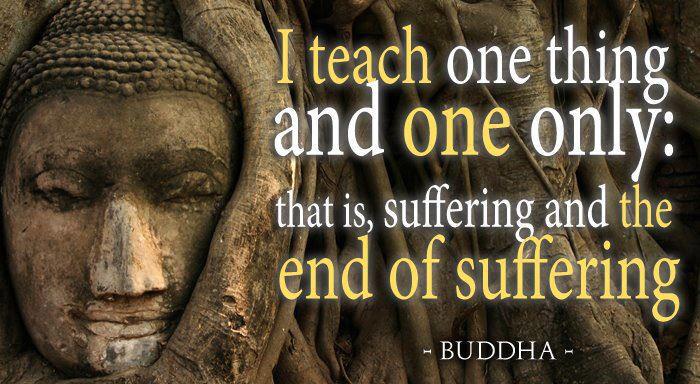
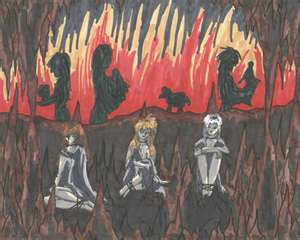



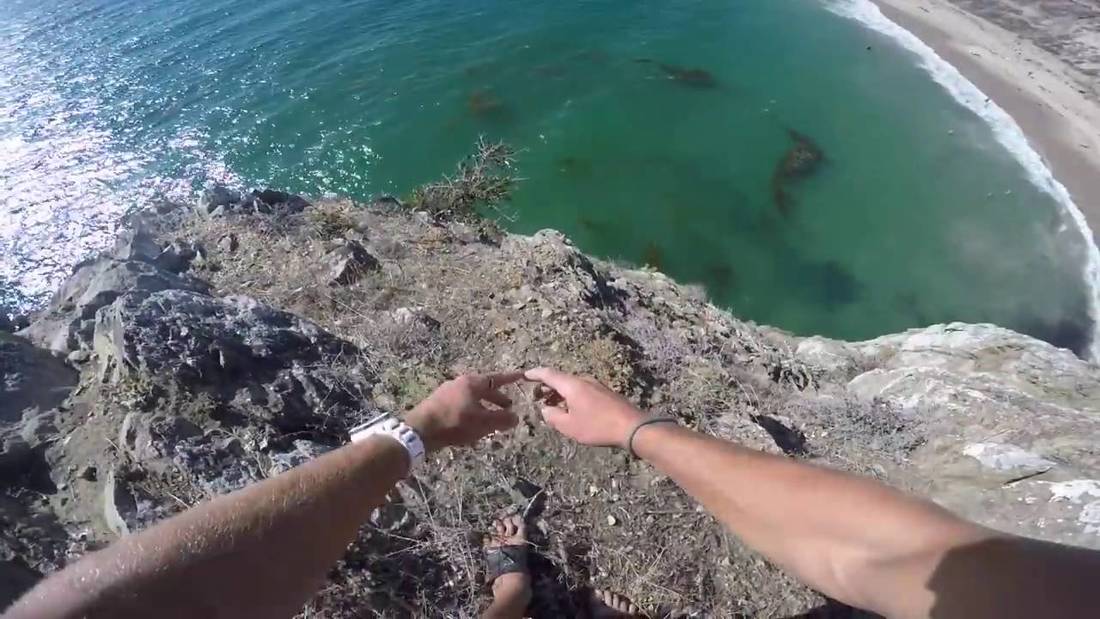


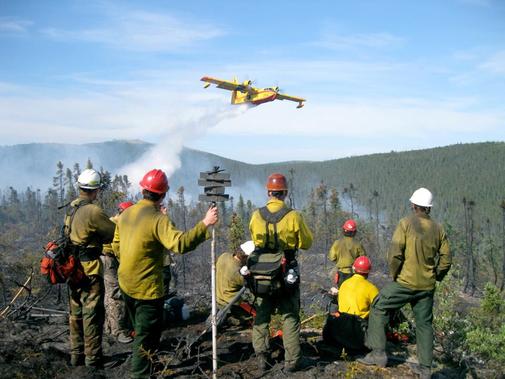







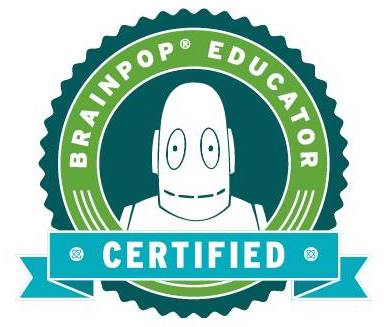
 RSS Feed
RSS Feed